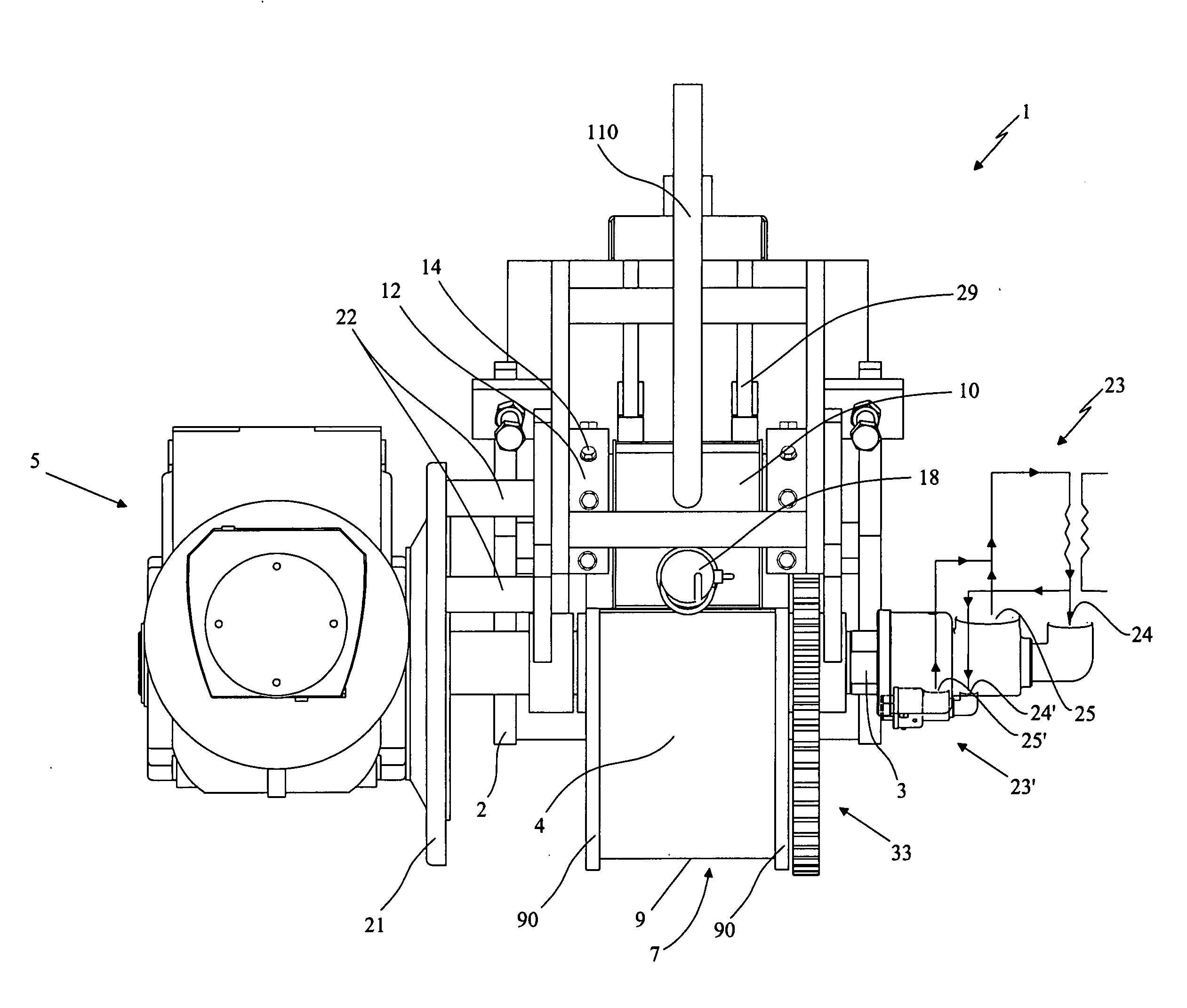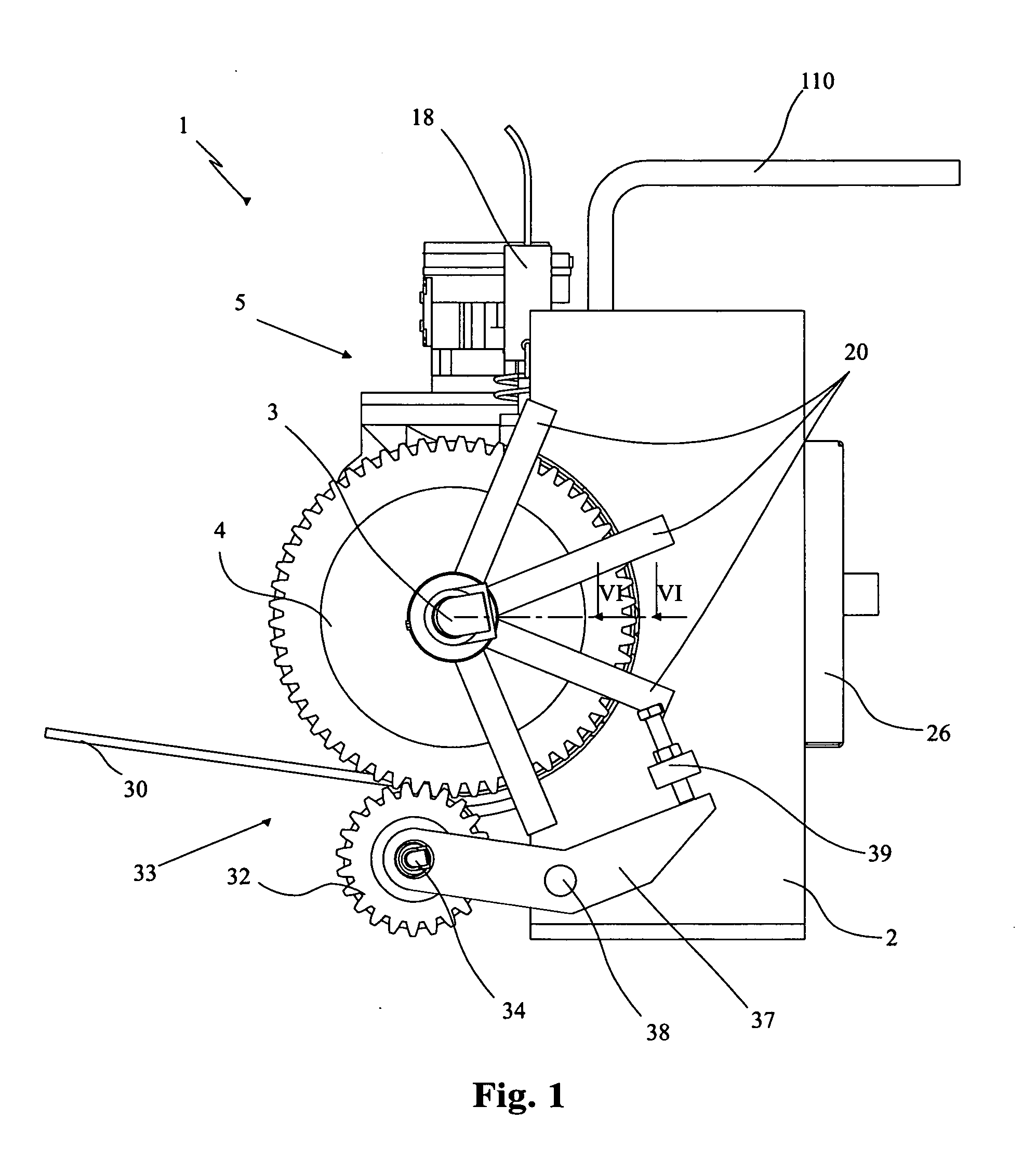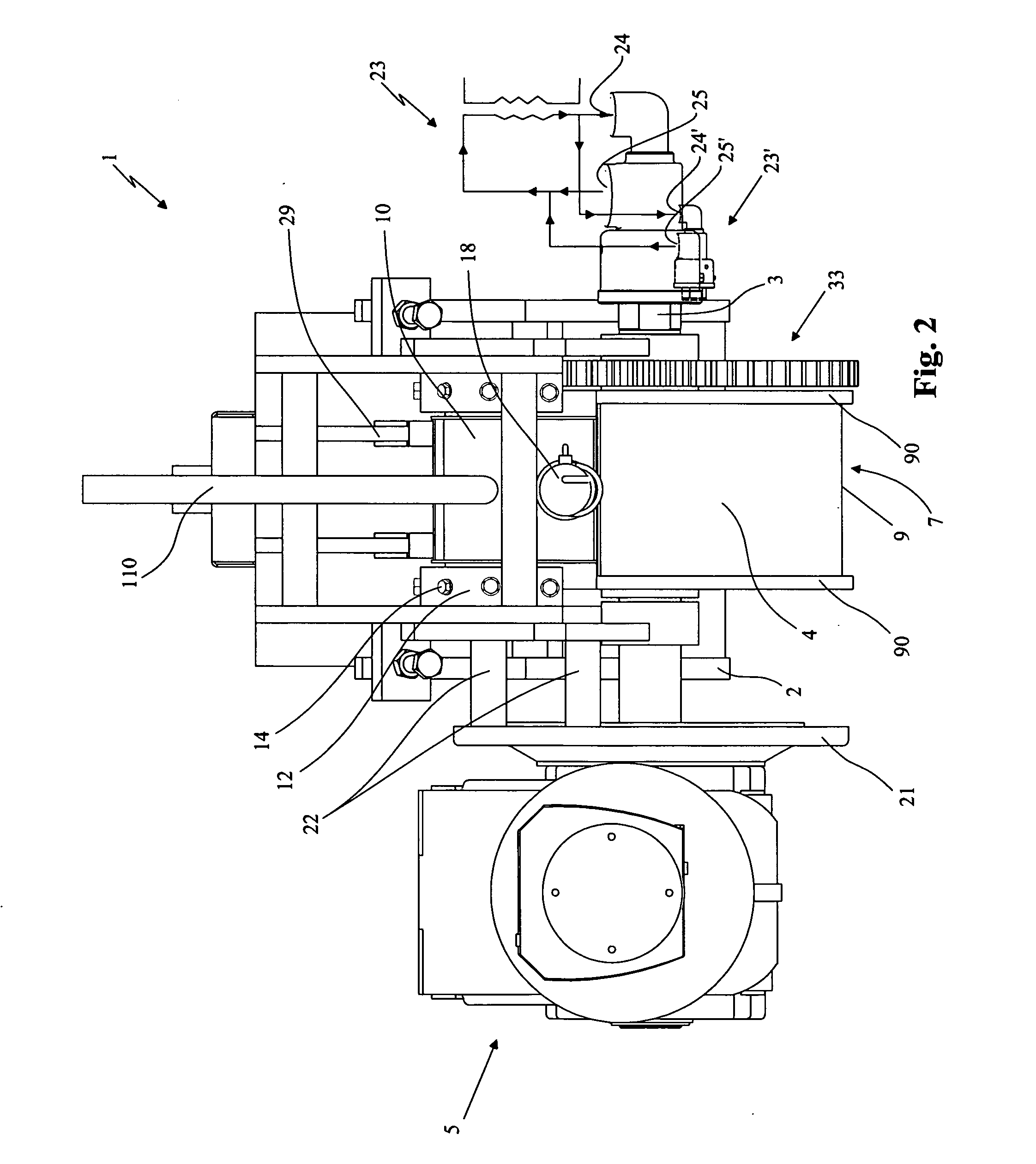Continuous casting machine for forming a lead alloy strip of large thickness
a technology of lead alloy and casting machine, which is applied in the field of continuous casting machine for forming lead alloy strips of large thickness, can solve the problems of high construction complexity, limited width of lead strips which it is able to produce, and excessive power consumption for rotation, so as to achieve optimum mechanical and chemical properties, reduce production costs, and ensure the effect of quality
- Summary
- Abstract
- Description
- Claims
- Application Information
AI Technical Summary
Benefits of technology
Problems solved by technology
Method used
Image
Examples
Embodiment Construction
[0040]With reference to the drawings 1 denotes in its entirety the continuous casting machine for forming a lead alloy strip of large thickness according to the present invention.
[0041]The lead strip produced by this machine is advantageously intended to be used in conventional processes for forming lead grids to be used with positive polarity or negative polarity in batteries.
[0042]These processes envisage the use of a large-thickness strip, rolling thereof down to the desired thickness and then, for example, stamping or alternatively incision and expansion thereof in order to form the individual grids.
[0043]Below, in order to simplify illustration, reference shall be made generally to a strip intended to be used in rolling processes for forming grids for electric batteries, and therefore typically with a thickness of 8-18 mm and width of 100-350 mm, described generally as being made of lead, although the material forming the strip may consist of any lead alloy suitable for use in ...
PUM
| Property | Measurement | Unit |
|---|---|---|
| thickness | aaaaa | aaaaa |
| thickness | aaaaa | aaaaa |
| thickness | aaaaa | aaaaa |
Abstract
Description
Claims
Application Information
 Login to View More
Login to View More - R&D
- Intellectual Property
- Life Sciences
- Materials
- Tech Scout
- Unparalleled Data Quality
- Higher Quality Content
- 60% Fewer Hallucinations
Browse by: Latest US Patents, China's latest patents, Technical Efficacy Thesaurus, Application Domain, Technology Topic, Popular Technical Reports.
© 2025 PatSnap. All rights reserved.Legal|Privacy policy|Modern Slavery Act Transparency Statement|Sitemap|About US| Contact US: help@patsnap.com



